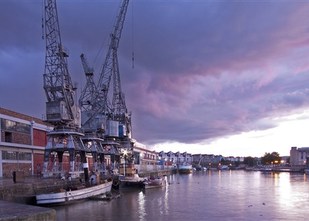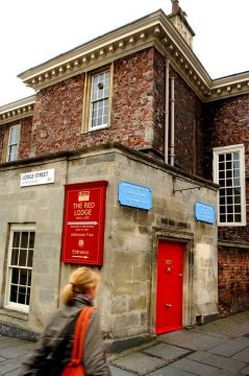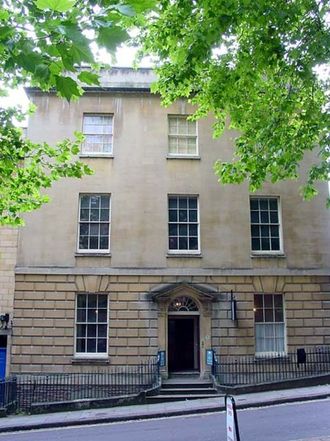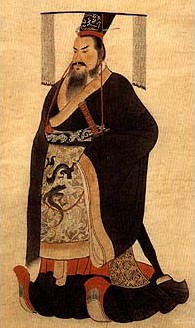This has been another fun week.I have been off exploring some of the different museum sites in Bristol this week - there are six of them.
 MShed © Bristol Museums, Galleries & Archives
MShed © Bristol Museums, Galleries & Archives Gail Boyle (the archaeology curator) gave me a tour around M Shed which tells the story of Bristol and its people in a 1950's transit shed on Bristol’s historic wharf.
You're probably thinking that the 'M' stands for Museum - it doesn't! The transit shed which houses the museum was originally called M Shed. I can't wait to get back and have another look around!
 The Red Lodge © Bristol Museums, Galleries & Archives
The Red Lodge © Bristol Museums, Galleries & Archives The Red Lodge Museum has been described as Bristol's 'hidden treasure' because of the magnificent Tudor rooms and I have to agree.The seven main rooms are used to trace the continuing and fascinating history of the house from its Tudor origins as a guest house and entertainment pavilion, through Georgian expansion, its role as a Victorian Girls' Reform School and current incarnation as a museum.
It is easy to distinguish between the original Tudor rooms and the Georgian rooms. Thankfully they kept the Tudor wood panelling! The dark engraved wood is absolutely gorgeous and incredibly intricate. It is a beautiful contrast to the light, airy and richly decorated Georgian rooms.
In 1854 the Red Lodge was turned into a school by Mary
Carpenter. Mary was a social reformer who founded the first Girls’ Reformatory at the Red Lodge. The school encapsulated her radical and progressive ideas of how to improve and nurture the Britain's poor. This was a stark contrast to the workhouses and prisons which were common during the Victorian Era.
The Reform School closed in 1917 and in 1919 the Red Lodge was bought by James Fuller Eberle for the Bristol Savages and the Bristol Corporation (now Bristol City Council).
Again - I can't wait to get back and have another look around.There are so many stories contained within the walls of these museums...
It is easy to distinguish between the original Tudor rooms and the Georgian rooms. Thankfully they kept the Tudor wood panelling! The dark engraved wood is absolutely gorgeous and incredibly intricate. It is a beautiful contrast to the light, airy and richly decorated Georgian rooms.
In 1854 the Red Lodge was turned into a school by Mary
Carpenter. Mary was a social reformer who founded the first Girls’ Reformatory at the Red Lodge. The school encapsulated her radical and progressive ideas of how to improve and nurture the Britain's poor. This was a stark contrast to the workhouses and prisons which were common during the Victorian Era.
The Reform School closed in 1917 and in 1919 the Red Lodge was bought by James Fuller Eberle for the Bristol Savages and the Bristol Corporation (now Bristol City Council).
Again - I can't wait to get back and have another look around.There are so many stories contained within the walls of these museums...
 The Georgian House © Wikipedia
The Georgian House © Wikipedia The Georgian House Museum was built in 1790 for John Pinney who was a slave plantation owner and sugar merchant. The six storey townhouse was built in the centre of Bristol and has been carefully restored to its former glory giving insights into life above and below stairs.
Did you know?
The house was also home to John Pinney's slave who was called Pero. Pero's Bridge at Bristol Harbour is named after him.
Walking around the Georgian House felt like I had entered a Jane Austin novel - and yes I did indulge and have an Elizabeth Bennet moment!
Did you know?
Apparently this was the house were the poets William Wordsworth and Samuel Taylor Coleridge first met.

I also took part in my first Young Archaeologists Club meeting! The Curator of Eastern Art and Culture Willemijn van Noord explained about Chinese archaeology and the First Emperor Qin Shi Huang, his tomb and his terracotta warriors.
I got to create a game to help explain Chinese dynasties to the young archaeologists. I decided to show the Chinese and British timelines alongside each other. The young archaeologists then had to match pictures of people and events to the correct part of the timeline.
For example: a picture of Stonehenge was placed at the start of the Bronze Age and a picture of the First Emperor was placed at the Qin Dynasty. This was a really interesting meeting and the leaders learned just as much as the young archaeologists.
I got to create a game to help explain Chinese dynasties to the young archaeologists. I decided to show the Chinese and British timelines alongside each other. The young archaeologists then had to match pictures of people and events to the correct part of the timeline.
For example: a picture of Stonehenge was placed at the start of the Bronze Age and a picture of the First Emperor was placed at the Qin Dynasty. This was a really interesting meeting and the leaders learned just as much as the young archaeologists.
 RSS Feed
RSS Feed
